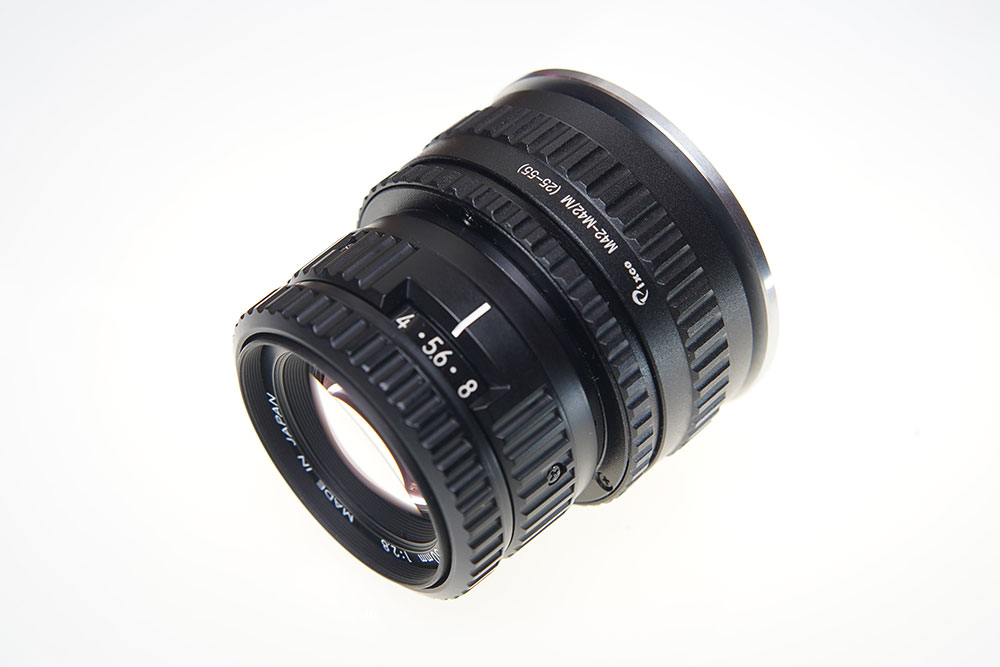Camera Scan, APS Body and Nikon Bellows?
Camera Scan, APS Body and Nikon Bellows?
Bellows and bellows-lenses were all the rage at one time. Major manufacturers had a system: Rails, camera mount, bellows, front standard w/lens mount, maybe a second bellows to shade the lens, and finally a flim/slide holder. These can be very effective, makes a nice compact setup. Watch for alignment and positioning. Check your intended lens will focus at desired magnification. Lots of light source options, including just pointing whole rig at bright clouds or even direct sunlight.
Can I camera-scan 35mm film to my APS body using my beautiful old bellows? With my 55mm macro lens? Answer: No.
Why not? The minimum extension with my Nikon bellows is 43mm, with either of the Nikon 55mm macro lenses, that extension produces a minimum magnification of right about 1x. For 35mm to an APS body, you need 0.67x.
So this lens and bellows can cam-scan to a full-frame body, but not to APS.
How to use the bellows and APS Body? Easiest route is an enlarging lens about 80mm and an M39-to-Nikon ring. Here's the setup with 80mm f/4 Rodagon focused properly for cam-scan to an APS body.
How about full frame body? Yes, with some qualifications.
Here's one setup with a 50mm enlarging lens and a FF body. Also works with a somewhat longer lens.
(Note that setup w/this lens would
not work with an APS body; the minimum bellows extension with Nikon PB-4 is 43 mm.)









